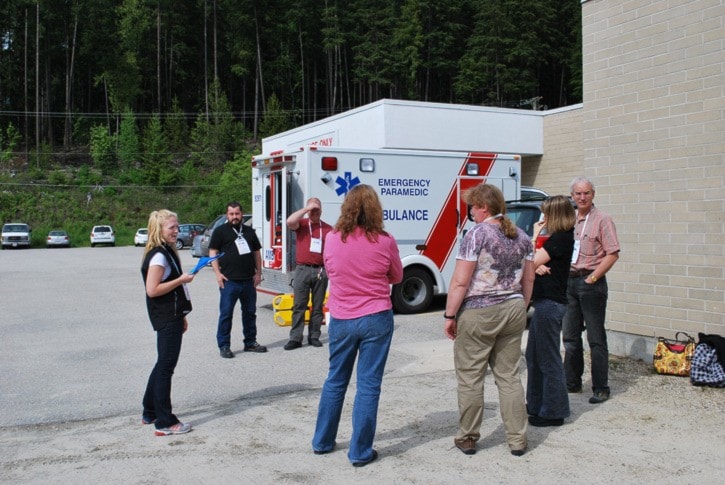“What are they doing up at the hospital?” a long-time Nakuspian asked me last Saturday, May 26.
If you had stopped by the Arrow Lakes Hospital that afternoon, you may have seen one of three teams wandering into and out of various rooms in the building.
About two dozen health care professionals gathered at the Arrow Lakes Hospital last weekend for emergency medical training tailored for rural locations. The weekend was one of a series of continuing professional development programs put together by the Rural Coordination Centre of BC, an organization that focuses on education as well as recruitment and retention of medical personnel to rural centres.
This particular educational program is the CARE (Comprehensive Approach to Rural Emergencies) course, which is being delivered to rural centres across B.C.
The program usually consists of an even split of doctors, nurses and paramedics, but because Nakusp is running short on paramedics, there were only four in this group, said local doctor Norm Lea.
Nonetheless, there were enough doctors and nurses from Kaslo, New Denver and Nakusp, and a lone Grand Forks visitor, to make up a good-sized Arrow Lakes group.
For both mornings, they attended classes and then split into three groups in the afternoons to run through scenarios practising the skills they had learned.
Rural health care practitioners get exposure to all kinds of cases in an emergency room, said coordinator Rebecca Lindley. These courses offer specific training that will serve them well in a rural ER, she said.
During the afternoon scenarios, the participants practised skills like intubation, packaging patients for transport and more.
A dummy was used for the intubation, but one lucky person was bundled into a clamshell stretcher and strapped down for transport, mimicking the real thing.
Practise builds confidence, said Lindley, so each session has both classroom theoretical and hands-on practical components.
